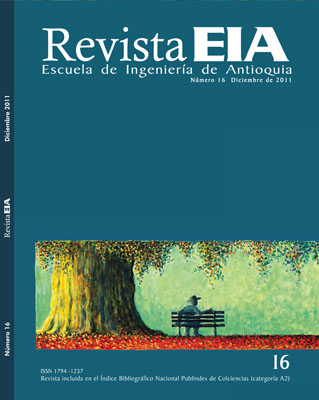CÁLCULO E INTERPRETACIÓN DE LAS TRAYECTORIAS DE PUNTOS DE COMPOSICIÓN CONSTANTE (PINCH) EN COLUMNAS SIMPLES DE DESTILACIÓN PARA MEZCLAS AZEOTRÓPICAS HOMOGÉNEAS (CALCULATION AND INTERPRETATION OF THE PINCH POINTS TRAJECTORIES IN SIMPLE DISTILLATION COLUMN
CÁLCULO E INTERPRETACIÓN DE LAS TRAYECTORIAS DE PUNTOS DE COMPOSICIÓN CONSTANTE (PINCH) EN COLUMNAS SIMPLES DE DESTILACIÓN PARA MEZCLAS AZEOTRÓPICAS HOMOGÉNEAS (CALCULATION AND INTERPRETATION OF THE PINCH POINTS TRAJECTORIES IN SIMPLE DISTILLATION COLUMN


This work is licensed under a Creative Commons Attribution-NonCommercial-NoDerivatives 4.0 International License.
Copyright statement
The authors exclusively assign to the Universidad EIA, with the power to assign to third parties, all the exploitation rights that derive from the works that are accepted for publication in the Revista EIA, as well as in any product derived from it and, in in particular, those of reproduction, distribution, public communication (including interactive making available) and transformation (including adaptation, modification and, where appropriate, translation), for all types of exploitation (by way of example and not limitation : in paper, electronic, online, computer or audiovisual format, as well as in any other format, even for promotional or advertising purposes and / or for the production of derivative products), for a worldwide territorial scope and for the entire duration of the rights provided for in the current published text of the Intellectual Property Law. This assignment will be made by the authors without the right to any type of remuneration or compensation.
Consequently, the author may not publish or disseminate the works that are selected for publication in the Revista EIA, neither totally nor partially, nor authorize their publication to third parties, without the prior express authorization, requested and granted in writing, from the Univeridad EIA.
Show authors biography
Se presenta un método de continuación del tipo predictor-corrector para trazar completamente los ramales de puntos de pinch asociados con los productos o seudoproductos de una columna de destilación azeotrópica homogénea. El método trata fácilmente con los puntos de retorno permitiendo la localización de los puntos pinch del tipo tangente. El concepto se fundamenta en las ideas de Fidkowski, Malone y Doherty, pero incluye algunas novedades, como la estrategia de iniciación de los cálculos, la forma de obtener el vector tangente y el grupo de ecuaciones sobre el cual se aplica la técnica. Se ilustran tres ejemplos con las soluciones de acetona + cloroformo + benceno, acetona + cloroformo + metanol y ácido acético + amilalcohol + amilacetato, enfatizando en casos que muestran mejores posibilidades de separación en la condición de reflujo finito que en la operación con reflujo total.
Abstract: A continuation method of the kind predictor-corrector is presented for completely tracking of the pinch points branches related to the products or pseudoproducts of a homogeneous azeotropic distillation column. The method easily handles the turning points allowing the localization of the tangent pinch points. The foundation of the concept is in the ideas of Fidkowski, Malone y Doherty; however, some novelties are included, as the initiation strategy for calculations, the way to obtain the tangent vector and the set of equations on which the technique is applied. Three examples are illustrated with the solutions of acetone + chloroform + benzene, acetone + chloro - form + methanol and acetic acid + amyl alcohol + amyl acetate, emphasizing cases that show better separation possibilities in the finite reflux condition than with total reflux operation.
Article visits 949 | PDF visits 233
